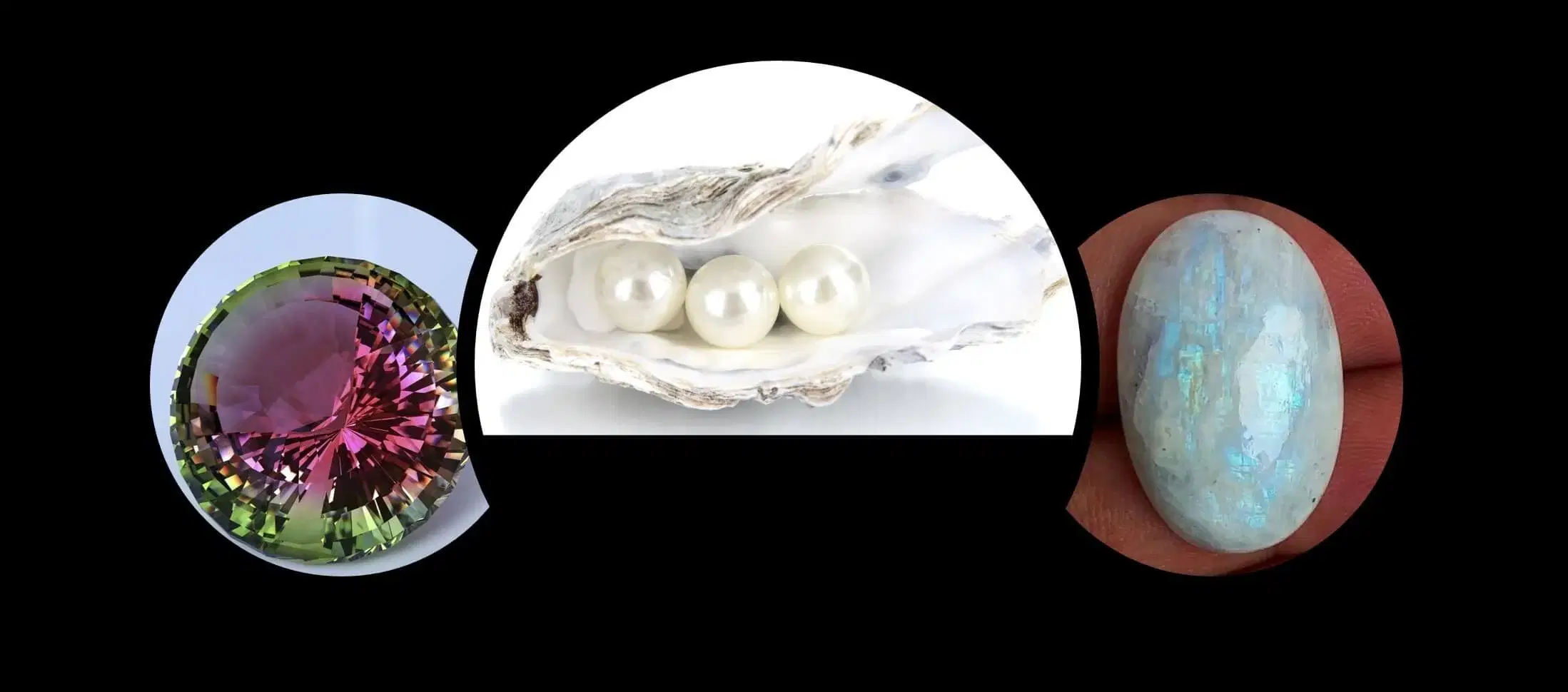Alexandrite
Alexandrite is a rare and valuable gemstone belonging to the chrysoberyl mineral family. It exhibits a unique color-changing effect, appearing greenish-blue in daylight and reddish-purple in incandescent light. The hardness of Alexandrite on the Mohs scale is 8.5, making it a durable gemstone suitable for use in jewelry.
It is a rare gemstone in Russia, Sri Lanka, Brazil, and East Africa. Russian Alexandrite—first discovered in the Ural Mountains in the early 19th century—is considered the most valuable and sought-after variety. It is often used in high-end jewelry designs and is prized for its rarity, beauty, and unique color-changing effect.
Pearl
Pearls have been used in jewelry for thousands of years and carry a rich history and symbolism. In many cultures, pearls are associated with purity, innocence, and wisdom and are worn by brides on their wedding day as a symbol of love and fertility. The Mohs scale hardness of the pearl is relatively low, ranging from 2.5 to 4.5, requiring gentle handling and care.
Australia is one of the largest producers of South Sea pearls, valued highly due to their large size and beautiful golden hue. The Gulf of Mexico is home to some of the biggest and most valuable natural pearls worldwide. Moreover, India also produces freshwater pearls found in the rivers of the country's eastern region.

Opal and Swiss Blue Topaz Halo Ring (Watch HD).
Moonstone
Moonstone's iridescent sheen and otherworldly quality make it a popular subject for artists. It can be used in paintings, sculptures, or mixed media pieces to add a touch of mysticism and intrigue. Its hardness on the Mohs scale is around 6, implying it is relatively durable but susceptible to scratches and damage.
It can be found in Sri Lanka, India, Madagascar, Myanmar, and the United States, among other places. However, Sri Lanka is known for producing some of the highest-quality moonstones.

